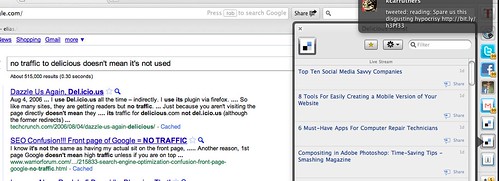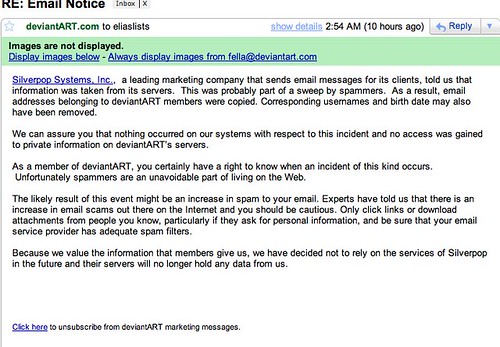MG Siegler wrote a post following our exchange on Twitter. I called him out because for the second time that day, I had logged into Quora only to see minutes later a TechCrunch post being Tweeted that was rehashing the original Quora discussion. Is this the future of journalism?
Blogging 3.0
Siegler wrote an eloquent post expanding on my original jibe that he was practicing blogging 3.0 (I called it that as over the years Marshall Kirkpatrick would constantly joke Twitter is what paid his rent). Now don’t get me wrong: Quora is one of my favourite websites right now, and Siegler (as well as Kirkpatrick) are two of the more talented writers in the blogosphere. But it made me wonder: what’s the role of the journalist in the world, and by implication, the news blogger?
For the bloggers out there who receive bonuses by getting headlines on Techmeme — what’s stopping Gabe Rivera (Techmeme’s founder) from simply importing the RSS feed of Quora posts and having its human editors headline the best answer? As Siegler points out, he (worryingly) already has. Given Quora responses are like blog posts and get aggregated into a community wiki-like answer summary, I can’t see why this won’t become a new input source for Techmeme, completely bypassing the traditional blogs.
And while we are on the topic: Julian Assange of Wikileaks argues that they are pioneering a new form of journalism, which he recently argued in an editorial for The Australian, as “Scientific journalism“. Scientific because you can read the source of the material in its naked form or accompanying an article that discusses the source.
Source material is democratised
Journalists, it is said, are becoming curators of information. Siegler claims he has retrieved information from an obscure source, amplified it, which in turn will be broadcasted by a bigger publisher like CNN. But if Quora democratices the source gathering — it’s so obscure that everyone in Silicon Valley is on it, include billionaires like Steve Chase who founded AOL and Mark Zuckerberg of Facebook — what’s stopping me from “breaking” the apparent news? Or Rivera from doing a direct RSS import of the top answers, direct to his audience of thousands?
If the big blogs are traffic hungry that have them reliant on the aggregators like Techmeme to feed their pageviews….And if this trend to scientific journalism is being promoted, where journalistic bias adds colour to a source only if you want (rather then the bias being the source of your information consumption) — then one has to ponder. That the evolution of journalism will come not from changes in journalistic style, but by changes in technology — an evolution where every single one of us can talk openly about the world and in an applied way.
Siegler says this is business as usual for the bloggers, but I think it’s business as usual for the disruption technology is generating for the news making business. Disruption that will continue to favour those who tease out the source of news (like Quora, Twitter and Wikileaks has) and those who curate it into an efficient way to consume (like aggregators such as Techmeme, Google News and Digg).
The future of journalism resides with those that create the originating value: traffic or content
Before the Internet, newspapers were the sole source of information and so had an elevated role in society. Now they are being relegated to just one of the many sources of news; once considered a horror if they disappeared, they would not impact the world if they went bankrupt today (as there are plenty of online mastheads to replace their value). As social media technologies continue to be refined — where the participants curate the source material themselves — blogs will not disappear like how newspapers won’t disappear. But their position in the world is far from guaranteed, as the audience curation is being done better by the aggregators and the source material is now no longer proprietary to a journalist.




